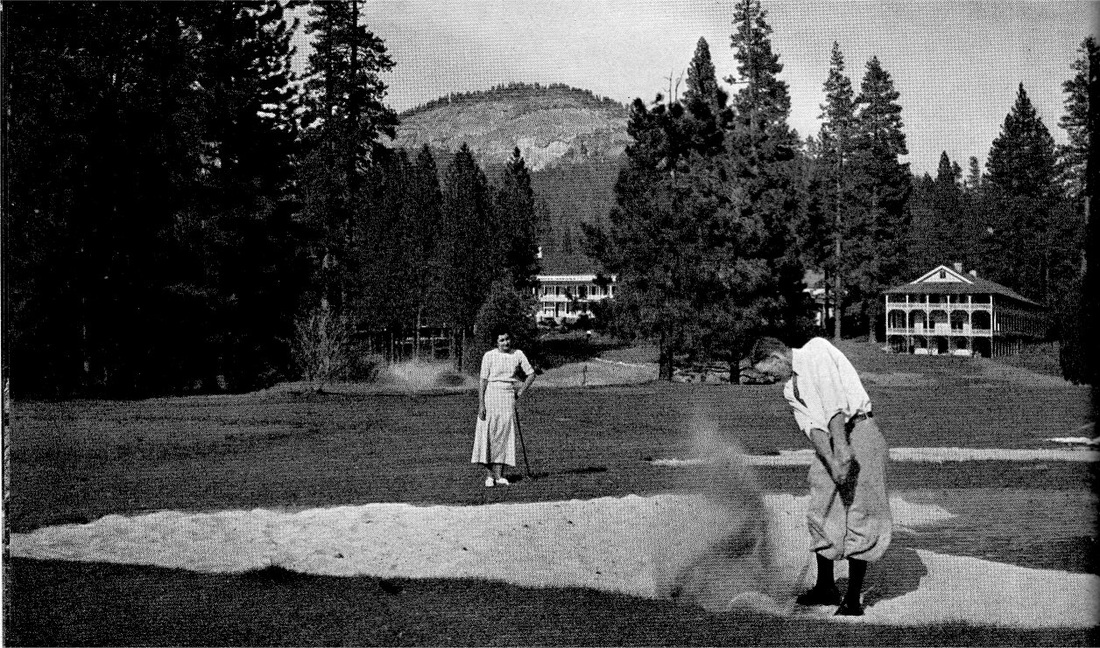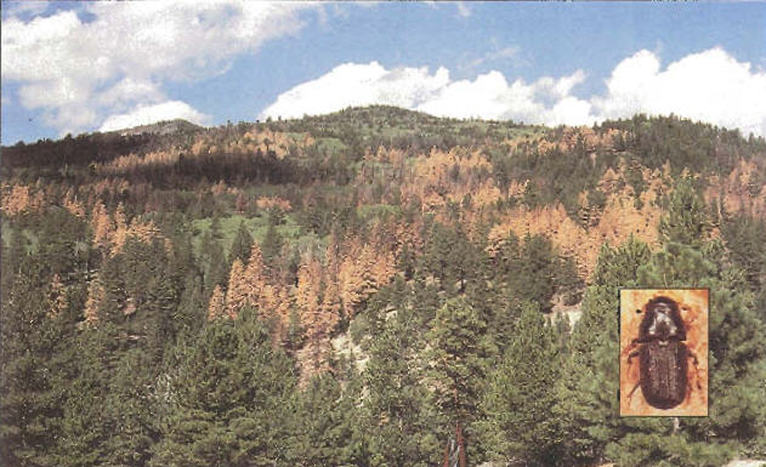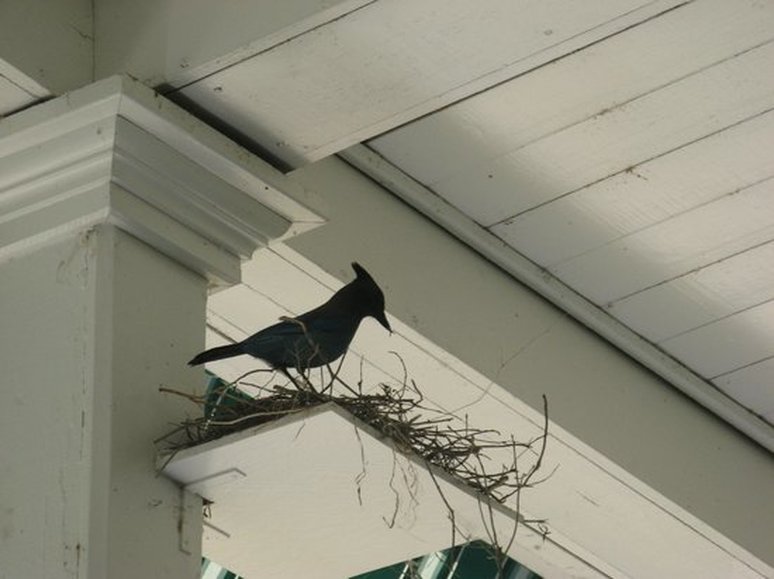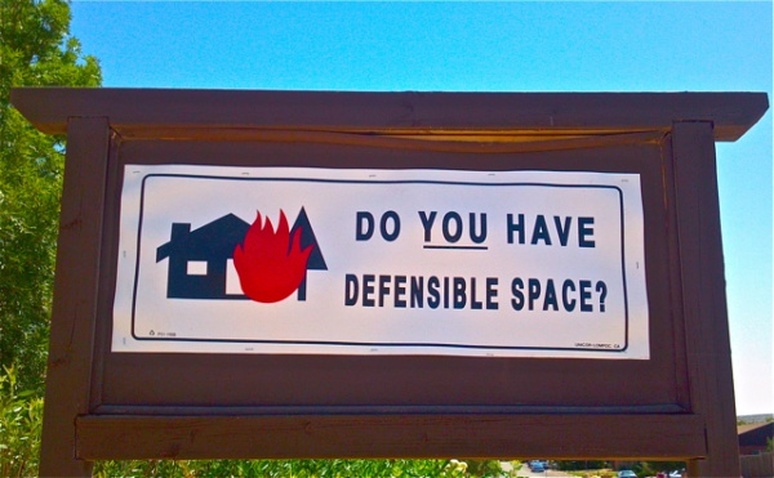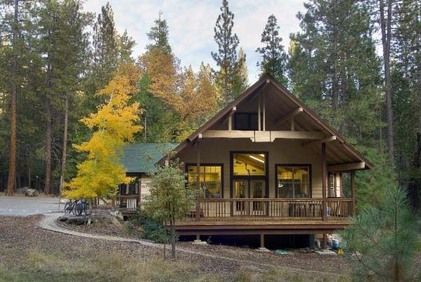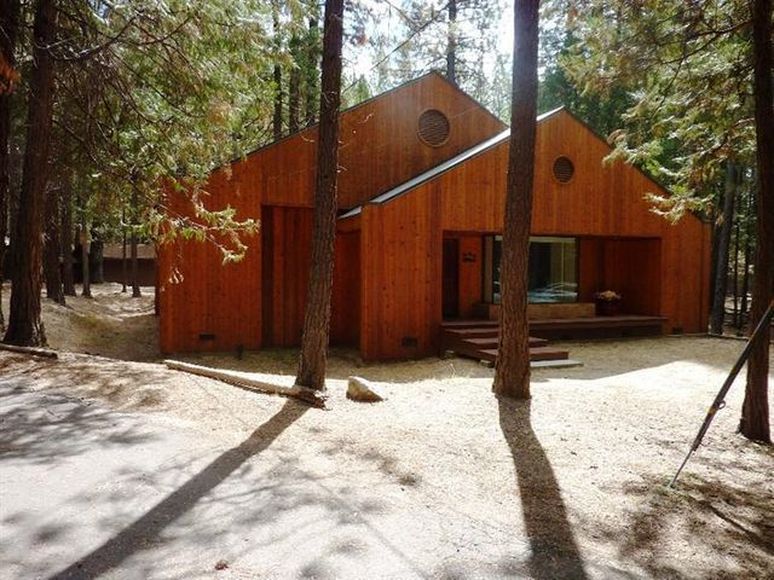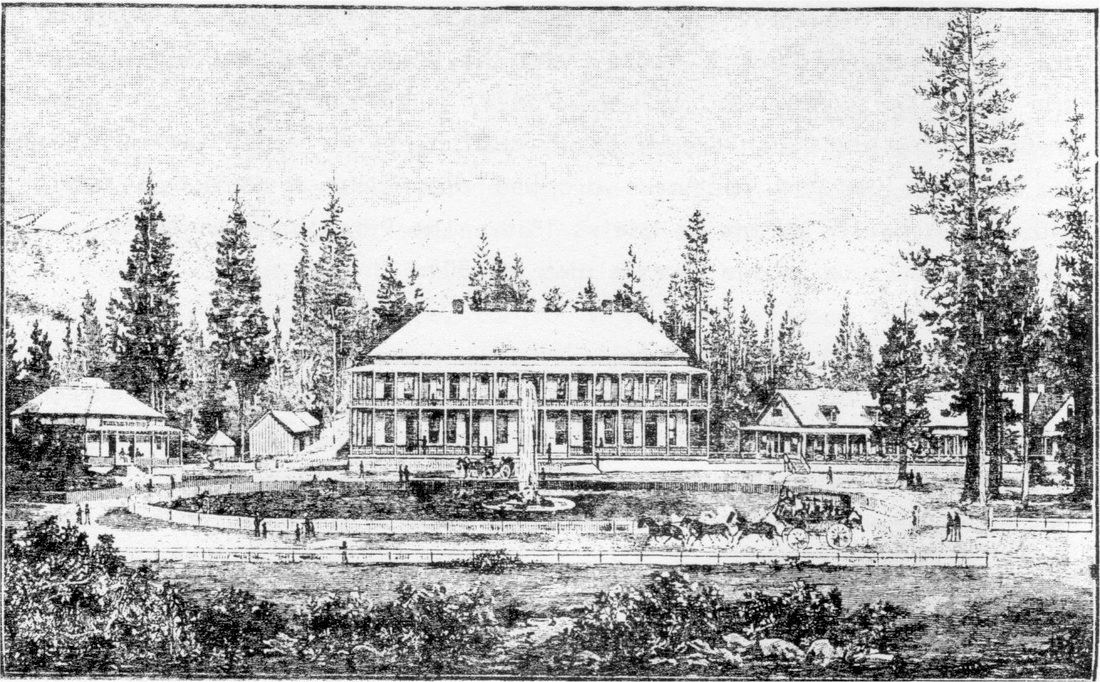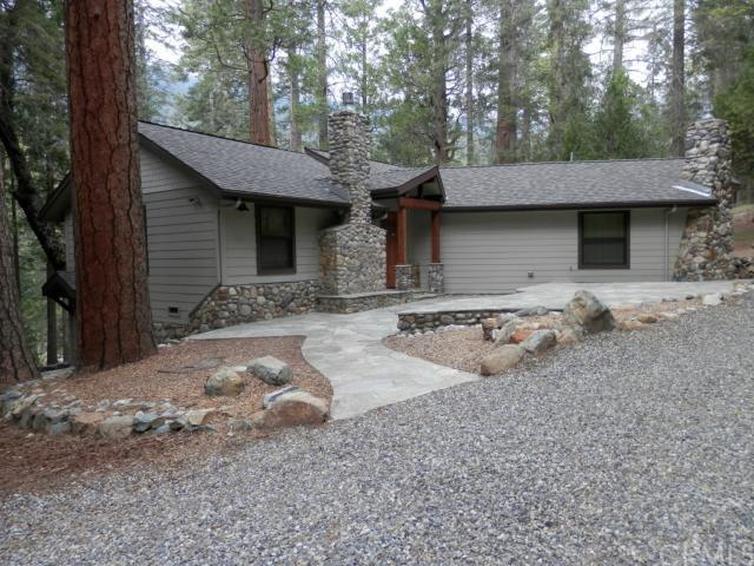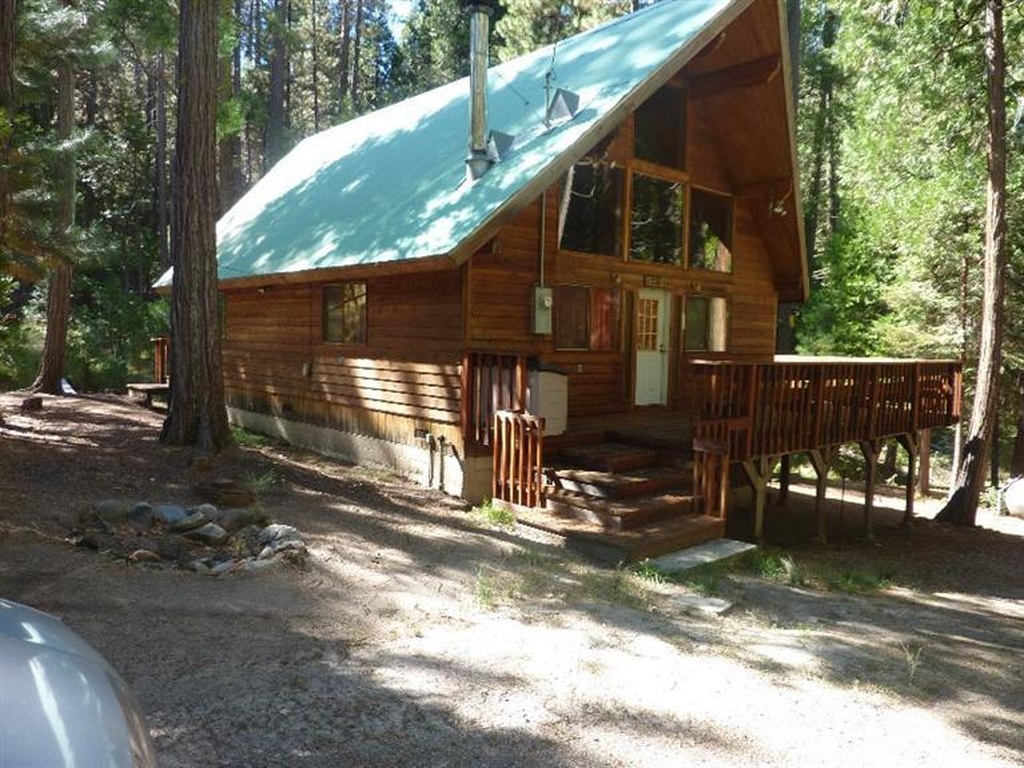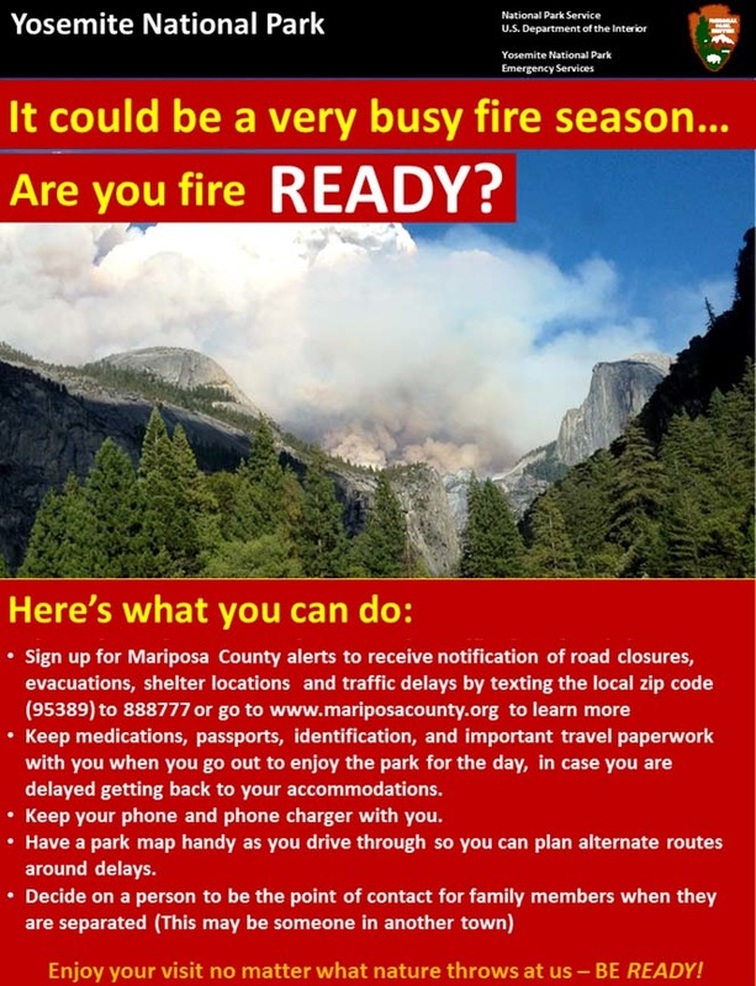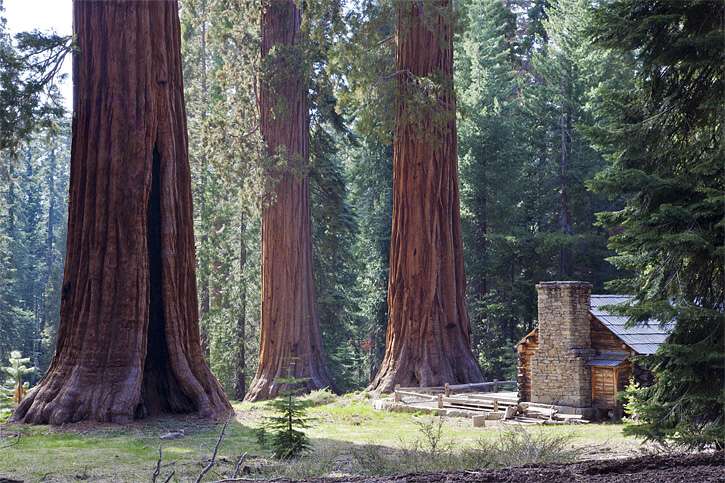WawonaNews.com - June 2015
Wawona Golf Tournament Saturday, September 19, 2015
SAVE THE DATE!
The Twelfth Annual Wawona Elementary School Celebrity Golf Tournament will be held on Saturday, September 19, 2015.
This signature event will include 18 holes of golf, BBQ Dinner, silent auction and live action, and a chance to play with a few local celebrities.
Tell your friends, get a team together, and come play golf on one of the most scenic courses around. All proceeds directly support the Yosemite-Wawona Elementary Charter School.
Visit our website for information and registration forms at www.yosemitewawonacharter.org.
Hope to see you there!
Thank you,
Chad Andrews
Yosemite-Wawona Elementary Charter School
Board Secretary
The Twelfth Annual Wawona Elementary School Celebrity Golf Tournament will be held on Saturday, September 19, 2015.
This signature event will include 18 holes of golf, BBQ Dinner, silent auction and live action, and a chance to play with a few local celebrities.
Tell your friends, get a team together, and come play golf on one of the most scenic courses around. All proceeds directly support the Yosemite-Wawona Elementary Charter School.
Visit our website for information and registration forms at www.yosemitewawonacharter.org.
Hope to see you there!
Thank you,
Chad Andrews
Yosemite-Wawona Elementary Charter School
Board Secretary
Notes on Bark Beetle Infestation Public Meeting at Oakhurst Elementary School, May 30, 2015
Submitted by Trish Peterson
Supervisor Tom Wheeler (Madera County) and Cal Fire hosted this meeting. Approximately 160 people attended. Speakers were Tom Wheeler, Beverly Bulaon (Forest Entomologist, US Forest Service), Len Nielson (CAL FIRE Unit Forester), Burt Stalter (Fuels Battalion Chief Sierra National Forest, US Forest Service), and Kristine Randal (Representative Mariposa/Merced County UC Cooperative Extension).
There was a lot of information given about the drought and bark beetle infestation, but here’s a brief summary.
The drought is the worst we’ve had since 1900, based on figures from the Palmer Drought Severity Index, which measures precipitation and dryness.
The bark beetle infestation has been going on for a few years, but is expected to dramatically increase this year. 2 million trees in the southern Sierra died from the beetles in 2014 (double from 2013). It’s expected that the number for 2015 will be a lot higher. The beetles only attack Ponderosa pines and they select diseased and injured or weak trees first (trees affected by other insects, fire, and/or drought). Incense cedars and oaks are not infested by bark beetles but can be infested by other insects – although they typically don’t kill these trees.
So what can we do?
Not much can be done in the forests. There are too many acres and too many trees. There is not enough water and the beetles are increasing. It would cost billions of dollars to spray chemicals. And even when these trees die, it would also cost too much to remove them. Plus, there are fewer mills in the area, and they are at maximum load now, so they are not taking any trees dead from beetles. In essence, all we can do is pray for rain!
For the individual landowner – there are things we can do
1) to prevent bark beetle infestation, some pesticides can be highly effective. Carboryl-based pesticides can give effective protection for 2 seasons. They are topically applied (spraying) by a qualified technician. Pyrethroid-based pesticides offer one season of protection. Still in research is the Triage pesticide method using injection near the base of the tree. This method looks very promising and also offers protection for 2 seasons. (There are also some “anti-aggregation pheromones” that have been used in Colorado, that cannot be bought in California. You can get them online, but they won’t work, since the beetle in Colorado is a different species.)
2) we can also try to get the healthiest trees possible by thinning them out. The recommendation is to have trees no closer together than 12 feet. Also, as far as the drought goes, pine trees use more water than cedars or oaks, so tinning out the pines will help with the water shortage. Choose your “high-value” trees.
3) Give the trees water where possible. Use a drip system if you can. Use recycled water (grey water)from your house.
4) Look for “hazard” trees . These are trees that if they fell, might hit one or more “targets”. These are people, buildings, power lines and roads that are the only way in or out in an emergency. Remove these trees if they are not healthy. Unfortunately (financially), the landowner is responsible to remove these trees. You need to contact the county to get a permit under the “timber harvest plan” in order to trade, sell or barter the cut wood.
Remember that this could be an extreme fire season. The wildfire flammability of dead trees is significantly higher (they can ignite 3 times faster than pine needles.)
We also have a long term fuel buildup - a thick undergrowth of needles and understory of cedars. Clear your property at least 30 feet from your house (100 feet if that’s possible), and “limb up” (cut dead limbs on the bottom part of the tree). Try to water the trees and consider thinning them out.
For more information on the meeting, contact Brittany Dyer (legislative Assistant to Tom Wheeler) at [email protected]
I am also attaching a copy of a list of Forest Management Services – Contractors and Registered Professional Foresters.
Afternote: I spoke to some PG&E representatives who were in Wawona this week and asked them if PG&E would pay to take out a tree that was not healthy that had their wires attached to it or that might fall on wires – even though it was on private property. They didn’t know but will ask and get back to me.
Supervisor Tom Wheeler (Madera County) and Cal Fire hosted this meeting. Approximately 160 people attended. Speakers were Tom Wheeler, Beverly Bulaon (Forest Entomologist, US Forest Service), Len Nielson (CAL FIRE Unit Forester), Burt Stalter (Fuels Battalion Chief Sierra National Forest, US Forest Service), and Kristine Randal (Representative Mariposa/Merced County UC Cooperative Extension).
There was a lot of information given about the drought and bark beetle infestation, but here’s a brief summary.
The drought is the worst we’ve had since 1900, based on figures from the Palmer Drought Severity Index, which measures precipitation and dryness.
The bark beetle infestation has been going on for a few years, but is expected to dramatically increase this year. 2 million trees in the southern Sierra died from the beetles in 2014 (double from 2013). It’s expected that the number for 2015 will be a lot higher. The beetles only attack Ponderosa pines and they select diseased and injured or weak trees first (trees affected by other insects, fire, and/or drought). Incense cedars and oaks are not infested by bark beetles but can be infested by other insects – although they typically don’t kill these trees.
So what can we do?
Not much can be done in the forests. There are too many acres and too many trees. There is not enough water and the beetles are increasing. It would cost billions of dollars to spray chemicals. And even when these trees die, it would also cost too much to remove them. Plus, there are fewer mills in the area, and they are at maximum load now, so they are not taking any trees dead from beetles. In essence, all we can do is pray for rain!
For the individual landowner – there are things we can do
1) to prevent bark beetle infestation, some pesticides can be highly effective. Carboryl-based pesticides can give effective protection for 2 seasons. They are topically applied (spraying) by a qualified technician. Pyrethroid-based pesticides offer one season of protection. Still in research is the Triage pesticide method using injection near the base of the tree. This method looks very promising and also offers protection for 2 seasons. (There are also some “anti-aggregation pheromones” that have been used in Colorado, that cannot be bought in California. You can get them online, but they won’t work, since the beetle in Colorado is a different species.)
2) we can also try to get the healthiest trees possible by thinning them out. The recommendation is to have trees no closer together than 12 feet. Also, as far as the drought goes, pine trees use more water than cedars or oaks, so tinning out the pines will help with the water shortage. Choose your “high-value” trees.
3) Give the trees water where possible. Use a drip system if you can. Use recycled water (grey water)from your house.
4) Look for “hazard” trees . These are trees that if they fell, might hit one or more “targets”. These are people, buildings, power lines and roads that are the only way in or out in an emergency. Remove these trees if they are not healthy. Unfortunately (financially), the landowner is responsible to remove these trees. You need to contact the county to get a permit under the “timber harvest plan” in order to trade, sell or barter the cut wood.
Remember that this could be an extreme fire season. The wildfire flammability of dead trees is significantly higher (they can ignite 3 times faster than pine needles.)
We also have a long term fuel buildup - a thick undergrowth of needles and understory of cedars. Clear your property at least 30 feet from your house (100 feet if that’s possible), and “limb up” (cut dead limbs on the bottom part of the tree). Try to water the trees and consider thinning them out.
For more information on the meeting, contact Brittany Dyer (legislative Assistant to Tom Wheeler) at [email protected]
I am also attaching a copy of a list of Forest Management Services – Contractors and Registered Professional Foresters.
Afternote: I spoke to some PG&E representatives who were in Wawona this week and asked them if PG&E would pay to take out a tree that was not healthy that had their wires attached to it or that might fall on wires – even though it was on private property. They didn’t know but will ask and get back to me.
WAWONA TOWN PLANNING ADVISORY COMMITTEE
Wawona Community Center
7917 Chilnualna Falls Road
June 5, 2015,
1 PM
1. Call to Order 2.
Introductions 3.
Amend and Approve December 5, 2014 Minutes
4. Public comments on non-agenda items. Note; The public may speak on any item not on the printed agenda. No action may be taken by the Committee. The public will also be given the opportunity to comment before or during the committee’s consideration of items.
5. Discussion/Action Items
a. Proposed amendments to text relating to Transient (vacation) Rentals and B&Bs in the Wawona TPA Specific Plan, County General Plan, and Titles 3 and 17, Mariposa County Code.
b. NPS review of current and pending Projects as affect Wawona (should include schedule and impact on community).
c. MOU Update
d. NPS withdrawal of its approval of the 2007 Specific Plan Amendment allowing for Organized Recreation Camps as a Conditional Use
e. Zone designations in Wawona
6. Information and Report Items
a. Supervisor, District V
b. Planning Commissioner, District V
c. Wawona District Ranger
7. Next meeting; date, time and agenda
8. Adjournment n compliance with the American Disabilities Act, if you need special assistance to participate in this meeting, please contact the planning Department at 209-966-5151.
7917 Chilnualna Falls Road
June 5, 2015,
1 PM
1. Call to Order 2.
Introductions 3.
Amend and Approve December 5, 2014 Minutes
4. Public comments on non-agenda items. Note; The public may speak on any item not on the printed agenda. No action may be taken by the Committee. The public will also be given the opportunity to comment before or during the committee’s consideration of items.
5. Discussion/Action Items
a. Proposed amendments to text relating to Transient (vacation) Rentals and B&Bs in the Wawona TPA Specific Plan, County General Plan, and Titles 3 and 17, Mariposa County Code.
b. NPS review of current and pending Projects as affect Wawona (should include schedule and impact on community).
c. MOU Update
d. NPS withdrawal of its approval of the 2007 Specific Plan Amendment allowing for Organized Recreation Camps as a Conditional Use
e. Zone designations in Wawona
6. Information and Report Items
a. Supervisor, District V
b. Planning Commissioner, District V
c. Wawona District Ranger
7. Next meeting; date, time and agenda
8. Adjournment n compliance with the American Disabilities Act, if you need special assistance to participate in this meeting, please contact the planning Department at 209-966-5151.
Yosemite Announces Fire Season
The 2015 fire season officially began Sunday May 24, 2015. Fire crews have completed all training, fire refreshers and fitness tests and all stations are staffed. The park is currently transitioning to fire season preparedness and fire resources will be available seven days per week for suppression efforts. Park fire resources for the season include: fire management officials, four Type 3 wildland engines, one helicopter, and one hand crew.
In preparation for the fire season, the park will begin defensible space inspections throughout Yosemite’s communities, including Aspen Valley, Hodgdon Meadows, Foresta, El Portal, Yosemite Valley, and Wawona starting on Monday, June 1.
Residents and homeowners are urged to clear a defensible space of 100 feet or to property lines around homes and other structures in an effort to reduce the risk of fire hazards.
Grasses and other vegetation at the lower elevations have begun to dry out. This year, vegetation is drying out faster than average due to the low snowpack the park received over the last four winter seasons, making fire danger above average for this time of year.
With the official declaration of fire season, pile burning will be discontinued throughout the park until further notice.
The fire potential is elevated statewide and has moved peak fire season conditions earlier than predicted. Yosemite National Park urges local residents and visitors to “Please be Fire Safe,” when residing and visiting the park and other public lands.
Special attention should be given when departing campgrounds, backcountry camping sites, and picnic areas to make sure all campfires have been extinguished with water, mixed with ashes and are out on departure.
For more information about fire in Yosemite National Park, please visit:
http://www.nps.gov/yose/blogs/fireinfo.htm
In preparation for the fire season, the park will begin defensible space inspections throughout Yosemite’s communities, including Aspen Valley, Hodgdon Meadows, Foresta, El Portal, Yosemite Valley, and Wawona starting on Monday, June 1.
Residents and homeowners are urged to clear a defensible space of 100 feet or to property lines around homes and other structures in an effort to reduce the risk of fire hazards.
Grasses and other vegetation at the lower elevations have begun to dry out. This year, vegetation is drying out faster than average due to the low snowpack the park received over the last four winter seasons, making fire danger above average for this time of year.
With the official declaration of fire season, pile burning will be discontinued throughout the park until further notice.
The fire potential is elevated statewide and has moved peak fire season conditions earlier than predicted. Yosemite National Park urges local residents and visitors to “Please be Fire Safe,” when residing and visiting the park and other public lands.
Special attention should be given when departing campgrounds, backcountry camping sites, and picnic areas to make sure all campfires have been extinguished with water, mixed with ashes and are out on departure.
For more information about fire in Yosemite National Park, please visit:
http://www.nps.gov/yose/blogs/fireinfo.htm
Wawona Library Summer Hours
8006 Birdie Circle Wawona, CA 95389 $829,000
3 Bedrooms; 2 Bathrooms; 1960 sq. ft.; Roof Type - Metal; Fireplaces: 1 Click here for more info.
Wawona Town Planning Advisory Committee (WTPAC)
Regular Meeting
6/5/2015
1 P.M.
Wawona Community Center
7915 Chilnualna Falls Road
Wawona, CA 95389
6/5/2015
1 P.M.
Wawona Community Center
7915 Chilnualna Falls Road
Wawona, CA 95389
2 New Real Estate Listings in Wawona
$1,595,000 7975 Forest Drive, Wawona, CA, 95389 Bedrooms:2 Bathrooms:3 Square Feet:1488 Lot Size:1.52 Acres Year Built:1954 click here for more info
$627,000 3 beds 2 baths 1,485 sqft - 7976 Koon Hollar, Wawona, CA 95389 Click here for more info
Your browser does not support viewing this document. Click here to download the document.
YOSEMITE-WAWONA ELEMENTARY CHARTER SCHOOL BOARD MEETING

Board of Directors Meeting
Wednesday, May 27, 2015 6:30 pm
Wawona Elementary School
7925 Chilnualna Falls Road
Wawona, California
AGENDA
1. CALL TO ORDER
2. ROLL CALL
MONTHLY ITEMS AND FINANCIAL REPORTS
3. CONSENT AGENDA
NOTE: The Board will be asked to approve all of the following items by a single vote, unless any member of the Board or of the public asks that an item be removed from the consent agenda and considered and discussed separately.
3.1. Approval of agenda
3.2. Approval of minutes of the regular meeting, May 13, 2015
4. Financial reports
4.1. Monthly approval of warrants (Action needed)
4.2. Financial Report
5. HEARING OF PERSONS WISHING TO ADDRESS THE BOARD
The public may address the Board on any matter pertaining to the school that is not on the agenda. Unless otherwise determined by the Board, each person is limited to five (5) minutes. There will be no Board discussion and no action will be taken unless listed on a subsequent agenda.
ACTION ITEMS
6. 2015-2016 Budget
INFORMATION ITEMS
7. LCAP Public Meeting on June 6th
8. BOARD MEMBER COMMENTS
9. STAFF REPORTS
9.1. L CAP Update
10. NEXT MEETING DATE
11. CLOSED SESSION Personnel/Negotiations/Litigation
NOTE: The Board will consider and may act upon any of the following items in closed session. Any action taken will be reported publicly at the end of the closed session as required by law.
11.1.Employee Negotiations (Gov. Code 54957.6)
11.2.Personnel (Gov. Code 54957)
12. RECOVENE IN OPEN SESSION: ANNOUNCE CLOSED SESSION ACTIONS
13. ADJOURNMENT
Updated Summer Calendar

May 27: Yosemite-Wawona Elementary Charter School Board Meeting 6:30 p.m.
May 30: Bark Beetle Infestation Public Meeting Oakhurst Elementary School 10 a.m.
June 6:: WAPOA Wawona Community Center 9 a.m
June 8—12 Wawona Needle Pickup by Mariposa County Public Works
July 1 : Wawona Friends of the Library Annual Membership Board meeting 10 a.m. In the Library
July 4: Square Dance at the Gray Barn 8-10 p.m.
July 18: Square Dance Gray Barn 8 – 10 p.m.
August 1: Square Dance Gray Barn 8 – 10 p.m.
August 8: Square Dance Gray Barn 7:30 – 9:30 p.m.
August 15: Square Dance Gray Barn 8 – 10 p.m.
September 5: Wawona Friends of the Library Annual Book/Bake/Craft Sale: 9 a.m.-3 p.m. Library parking lot ~ Rain moves the sale to the Wawona Community Center
September 5: Square Dance Gray Barn 8 – 10 p.m.
September 12 : WAPOA Wawona Community Center 9 a.m.
September 12: Large item pickup Wawona Maintenance Yard
September 19: Wawona School Celebrity Golf Tournament
Restoration of the Mariposa Grove of Giant Sequoias Project
The Mariposa Grove restoration project will restore dynamic ecological processes and increase the resiliency of this treasured grove to withstand emerging stressors today and in the future. This project is underway, although major work won't begin until at least July 6, 2015, and tentatively ending about 24 months later.
Once completed, visitors to the Mariposa Grove will notice the removal of the gift shop, tram road, and tram tours; a smaller, relocated parking lot in the grove (with a larger parking lot at South Entrance with free shuttle service into the grove); a wheelchair-accessible trail to the Grizzly Giant; and new restrooms with flush toilets.
Project Impacts
Most of the Mariposa Grove will be closed, as described below. We will attempt to provide additional access as work and weather permit. This page will be updated if access changes.
Mariposa Grove Road and Lower Mariposa Grove
The lower Mariposa Grove and Mariposa Grove Road will be closed for 24 months beginning no earlier than July 6, 2015. (The lower grove includes the Fallen Monarch, Bachelor and Three Graces, the Grizzly Giant, and the California Tunnel Tree.)
Upper Mariposa Grove
The upper Mariposa Grove will be closed for 24 months beginning no earlier than July 6, 2015, however, foot and equestrian access will be allowed along the Outer Loop Trail, and visitors can access the Outer Loop Trail by foot or horseback using trails from Wawona and Fish Camp. (The upper grove includes the fallen Wawona Tunnel Tree, Telescope Tree, and the Mariposa Grove Museum.)
Big Trees Tram Tour and Wawona-Mariposa Grove Shuttle
The Big Trees Tram Tour permanently ceased in 2014.
The Wawona-Mariposa Grove shuttle has resumed service and will operate until the Mariposa Grove closes. After the grove closes, the shuttle will not operate for the duration of the project.
Once completed, visitors to the Mariposa Grove will notice the removal of the gift shop, tram road, and tram tours; a smaller, relocated parking lot in the grove (with a larger parking lot at South Entrance with free shuttle service into the grove); a wheelchair-accessible trail to the Grizzly Giant; and new restrooms with flush toilets.
Project Impacts
Most of the Mariposa Grove will be closed, as described below. We will attempt to provide additional access as work and weather permit. This page will be updated if access changes.
Mariposa Grove Road and Lower Mariposa Grove
The lower Mariposa Grove and Mariposa Grove Road will be closed for 24 months beginning no earlier than July 6, 2015. (The lower grove includes the Fallen Monarch, Bachelor and Three Graces, the Grizzly Giant, and the California Tunnel Tree.)
Upper Mariposa Grove
The upper Mariposa Grove will be closed for 24 months beginning no earlier than July 6, 2015, however, foot and equestrian access will be allowed along the Outer Loop Trail, and visitors can access the Outer Loop Trail by foot or horseback using trails from Wawona and Fish Camp. (The upper grove includes the fallen Wawona Tunnel Tree, Telescope Tree, and the Mariposa Grove Museum.)
Big Trees Tram Tour and Wawona-Mariposa Grove Shuttle
The Big Trees Tram Tour permanently ceased in 2014.
The Wawona-Mariposa Grove shuttle has resumed service and will operate until the Mariposa Grove closes. After the grove closes, the shuttle will not operate for the duration of the project.
Dean Potter, Extreme Climber, Dies in BASE-Jumping Accident off Taft Point
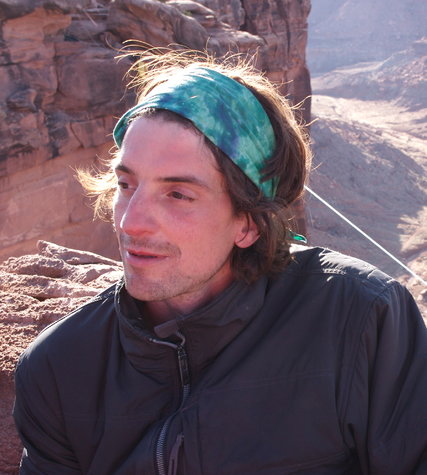
Dean Potter, one of the generation’s top rock climbers and charismatic personalities, was one of two men killed in a BASE-jumping accident at Yosemite National Park in California on Saturday.
Potter, 43, and the other man, Graham Hunt, 29, leapt near dusk off Taft Point, a promontory about 3,000 feet above the floor of Yosemite Valley, not far from the iconic granite masses of El Capitan and Half Dome. Flying in wingsuits, they tried to clear a notch in the granite cliffs but instead smashed into the rocks in quick succession.
Neither of the men pulled a parachute.
Rescue parties began searching late Saturday, and the bodies were spotted by helicopter Sunday morning and retrieved early in the afternoon, said Mike Gauthier, Yosemite’s chief of staff.
“It’s tremendously sad,” said Gauthier, an occasional climbing partner of Potter, who lived in Yosemite. “Dean was part of this community and had such an impact on climbing. He was a luminary and in the pantheon of climbing gods.”
Sinewy and strong at 6 feet 5 inches and 180 pounds, with dark hair often at shoulder length, Potter stood out for his looks and audacious achievements. He was a proselytizer for climbing, BASE jumping and living free.
“Part of me says it’s kind of crazy to think you can fly your human body,” Potter told The New York Times in 2008. “Another part of me thinks all of us have had the dream that we can fly. Why not chase after it? Maybe it brings you to some other tangent. Chasing after the unattainable is the fun part.”
Potter, who grew up mostly in New Hampshire, bloomed on the Yosemite climbing scene nearly 20 years ago. In 2001, he climbed the nose route of El Capitan in a record 3 hours 24 minutes. He was the first to free-climb (no ropes except to catch falls) both El Capitan and Half Dome in 24 hours.
In 2008, he was featured in The Times for highlining, essentially extreme tightrope-walking between cliffs. He spent much of his time in recent years BASE jumping and wingsuit flying.
This month, Potter made it to the top of Yosemite’s Half Dome in 1:19, and he completed the round trip in under 2:18, considered a record.
“Dean Potter has been a visionary influence in climbing for 20 years,” said Alex Honnold, another of the world’s best-known rock climbers and a Yosemite resident. “I grew up hearing about what he was climbing. He sort of shaped the direction of climbing for this generation. He was a very creative influence on climbing — never the best climber, but he took it in all these different directions.”
Potter could be a divisive figure. His 2006 climb of the iconic Delicate Arch in Arches National Park was heavily criticized and cost him his sponsorship from Patagonia, the outdoor clothing and equipment maker.
Last fall, after the release of “Valley Uprising,” a documentary on the history of Yosemite climbing in which Potter is shown highlining and, later, falling off a cliff only to pull a parachute at the last minute, he was one of several climbers, including Honnold, to lose a sponsorship deal with Clif Bar.
Living in Yosemite, with his longtime girlfriend, Jenn Rapp, and her children, Potter was often accompanied on his climbs and jumps by his miniature Australian cattle dog, Whisper, who became a bit of a celebrity, too, although Whisper was not on the fatal flight.
“Dean truly loved Yosemite,” said Rapp. “His heart, spirit and passions soared in the valley; it was his home. The beauty of Yosemite inspired him to be the best possible artist, partner, father and friend. This is exactly where he’d want his rule-breaking, fringe-pushing, counterculture spirit to live forever.”
Potter was the former husband of the climber and wing-suit flyer Steph Davis, who lost another husband, Mario Richard, to a BASE-jumping accident in Italy in 2013.
On Saturday evening, Potter and Hunt climbed to the cliff’s edge of Taft Point and leapt. A spotter at the top watched them descend and fly with their outstretched wingsuits. Once they fell out of sight, Gauthier said, she heard a “pop-pop” sound from below. She had hoped it was the smacking sound of their chutes opening somewhere in the darkening depths of the valley.
But daylight brought the confirmation that it was not.
Potter, 43, and the other man, Graham Hunt, 29, leapt near dusk off Taft Point, a promontory about 3,000 feet above the floor of Yosemite Valley, not far from the iconic granite masses of El Capitan and Half Dome. Flying in wingsuits, they tried to clear a notch in the granite cliffs but instead smashed into the rocks in quick succession.
Neither of the men pulled a parachute.
Rescue parties began searching late Saturday, and the bodies were spotted by helicopter Sunday morning and retrieved early in the afternoon, said Mike Gauthier, Yosemite’s chief of staff.
“It’s tremendously sad,” said Gauthier, an occasional climbing partner of Potter, who lived in Yosemite. “Dean was part of this community and had such an impact on climbing. He was a luminary and in the pantheon of climbing gods.”
Sinewy and strong at 6 feet 5 inches and 180 pounds, with dark hair often at shoulder length, Potter stood out for his looks and audacious achievements. He was a proselytizer for climbing, BASE jumping and living free.
“Part of me says it’s kind of crazy to think you can fly your human body,” Potter told The New York Times in 2008. “Another part of me thinks all of us have had the dream that we can fly. Why not chase after it? Maybe it brings you to some other tangent. Chasing after the unattainable is the fun part.”
Potter, who grew up mostly in New Hampshire, bloomed on the Yosemite climbing scene nearly 20 years ago. In 2001, he climbed the nose route of El Capitan in a record 3 hours 24 minutes. He was the first to free-climb (no ropes except to catch falls) both El Capitan and Half Dome in 24 hours.
In 2008, he was featured in The Times for highlining, essentially extreme tightrope-walking between cliffs. He spent much of his time in recent years BASE jumping and wingsuit flying.
This month, Potter made it to the top of Yosemite’s Half Dome in 1:19, and he completed the round trip in under 2:18, considered a record.
“Dean Potter has been a visionary influence in climbing for 20 years,” said Alex Honnold, another of the world’s best-known rock climbers and a Yosemite resident. “I grew up hearing about what he was climbing. He sort of shaped the direction of climbing for this generation. He was a very creative influence on climbing — never the best climber, but he took it in all these different directions.”
Potter could be a divisive figure. His 2006 climb of the iconic Delicate Arch in Arches National Park was heavily criticized and cost him his sponsorship from Patagonia, the outdoor clothing and equipment maker.
Last fall, after the release of “Valley Uprising,” a documentary on the history of Yosemite climbing in which Potter is shown highlining and, later, falling off a cliff only to pull a parachute at the last minute, he was one of several climbers, including Honnold, to lose a sponsorship deal with Clif Bar.
Living in Yosemite, with his longtime girlfriend, Jenn Rapp, and her children, Potter was often accompanied on his climbs and jumps by his miniature Australian cattle dog, Whisper, who became a bit of a celebrity, too, although Whisper was not on the fatal flight.
“Dean truly loved Yosemite,” said Rapp. “His heart, spirit and passions soared in the valley; it was his home. The beauty of Yosemite inspired him to be the best possible artist, partner, father and friend. This is exactly where he’d want his rule-breaking, fringe-pushing, counterculture spirit to live forever.”
Potter was the former husband of the climber and wing-suit flyer Steph Davis, who lost another husband, Mario Richard, to a BASE-jumping accident in Italy in 2013.
On Saturday evening, Potter and Hunt climbed to the cliff’s edge of Taft Point and leapt. A spotter at the top watched them descend and fly with their outstretched wingsuits. Once they fell out of sight, Gauthier said, she heard a “pop-pop” sound from below. She had hoped it was the smacking sound of their chutes opening somewhere in the darkening depths of the valley.
But daylight brought the confirmation that it was not.
